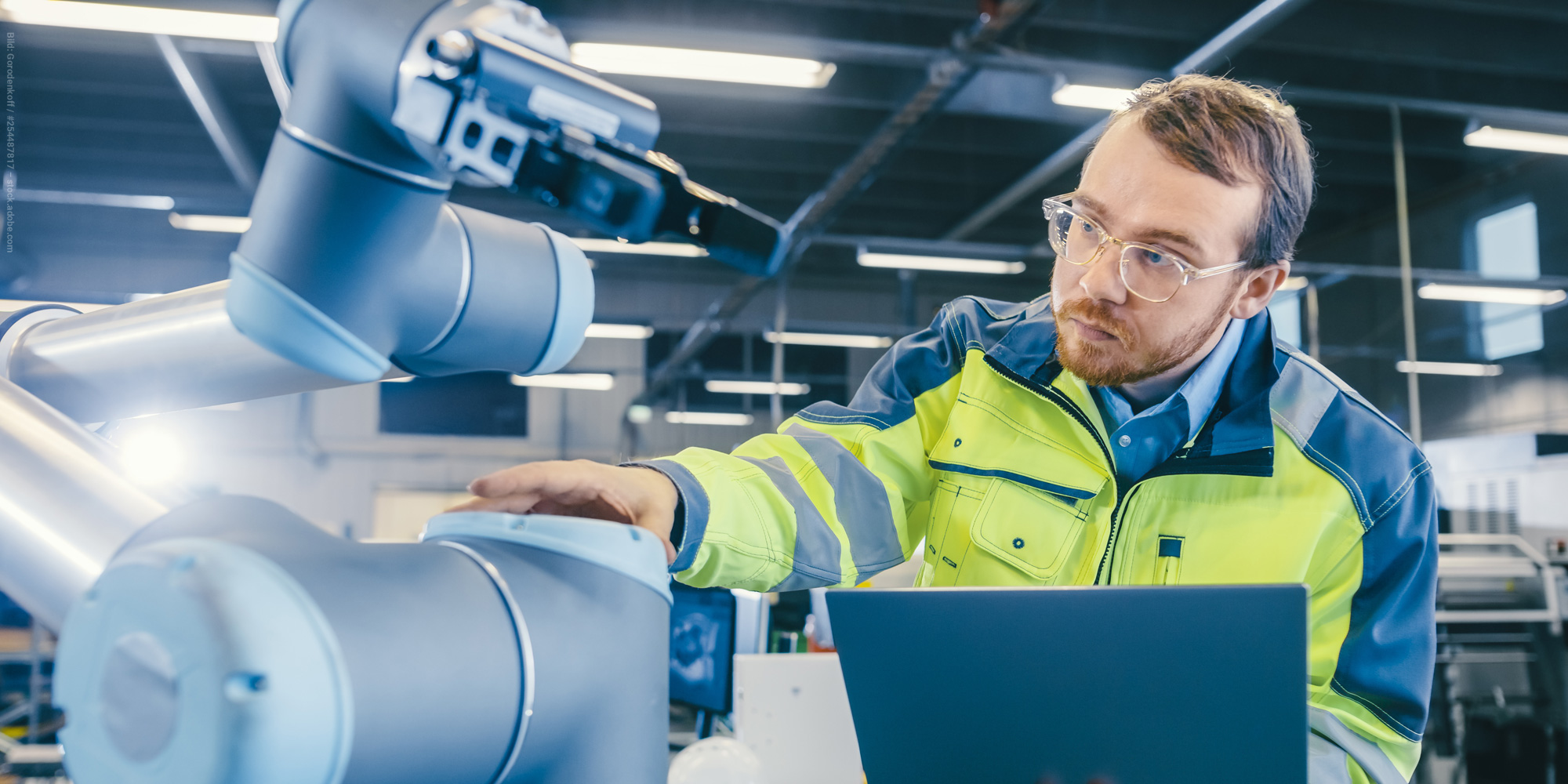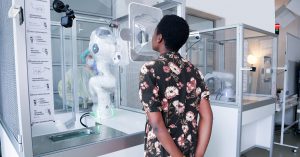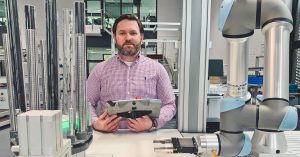State-of-the-art cobots make welding robots an accessible and affordable option for SMEs when it comes to small series.
There is an astonishing number of ways that robots can be used in production. The rapid development of robotics towards lightweight cobots is opening up a whole host of possibilities for manufacturing companies. The major advantage they offer is that they can be seamlessly and flexibly integrated into existing production environments. They don’t require the comprehensive safety equipment or large floorspace of conventional industrial robots. Thanks to their lightweight design, they can also be securely mounted onto mobile frame structures, which is another point that significantly expands the range of possible applications for this type of robot. In theory, the same robot can be used to both fasten screws and apply welds, for example – all within one shift.
The outstanding flexibility of cobots is due in part to their comparatively simple programmability and graphical user guidance. The large selection of end effectors (EOAT = end-of-arm tooling) is also crucial to their versatility. This makes robots of this kind ideal for taking on repetitive tasks such as assembling and sorting components and bulk material in manual production. Other interesting applications for cobots can be found in work processes that are ergonomically demanding or generally hazardous to the health of human workers.

An overview of robot applications
Read our white paper to discover even more applications and advantages of robotics in industry – and explore why robots are a worthwhile investment for small and medium-sized enterprises, too.
Get the white paper now
Leave the screw fixings to robots – not just for the sake of good ergonomics
Screwing together components is a classic manual production task – and it’s an ideal job for robots. Until recently, the time-consuming and sometimes delicate jobs in production have always been difficult and complicated to automate. Tightening screw fixings is also an ergonomically taxing aspect of assembly work, and staff will often have to complete this task several times in a single production step. Both the pressure and torque reaction created when tightening the screws put strain on the wrists. This is all the more true if employees have to adopt poor ergonomic posture when handling small screwdrivers to reach inconveniently located areas.
Force torque sensors measure the forces acting on the tool or robot arm and convert them into signals that the robot can then use. This means it can sense whether the screw is correctly positioned as it drives in the fixing.
Using robots to fix screws can take a great deal of strain off employees. Thanks to their numerous axes of movement, robots can reach screw fixings just as effectively as a human hand. What’s more, they can tighten or loosen even thousands of screws while always applying the exact torque required. With the help of camera-supported controls or force torque sensors, the robots can position the screwdriver with the utmost precision. The sensors measure the forces acting on the tool or the robot arm and convert them into signals that the robot can use. This means it can sense whether the screw is correctly positioned as it drives in the fixing. Cobots equipped with force torque sensors can achieve results very close to that of the human hand. And, thanks to these sensors, nobody needs to program ultra-precise stop points for the robot arm.
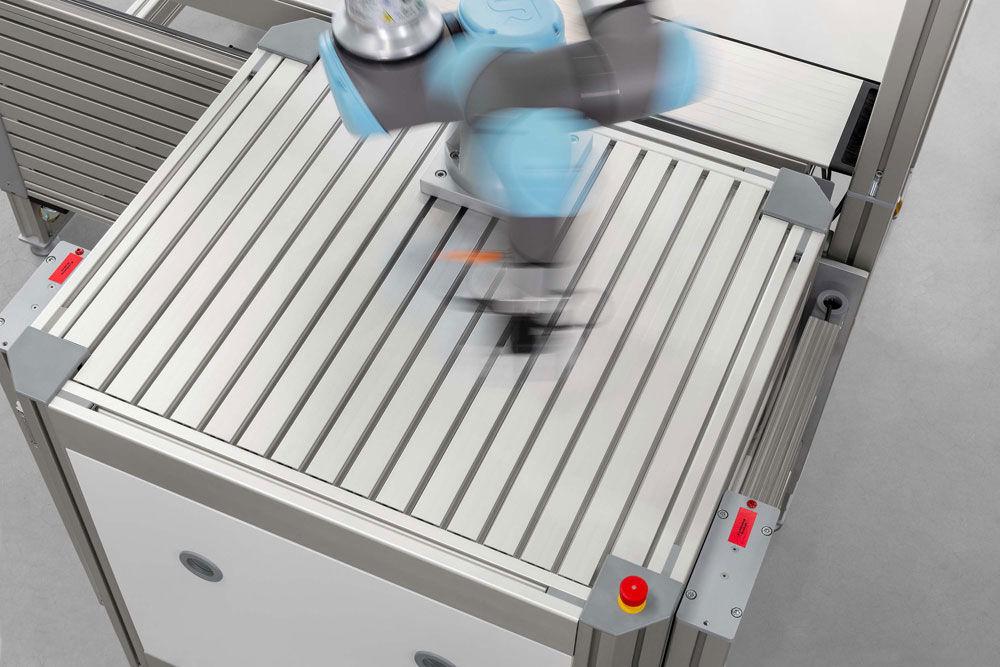
When robots weld, companies reap a wealth of benefits
Using cobots for welding also offers a whole host of benefits for companies. When welding is performed manually, employees run the risk of exposure to toxic smoke. This task is made even more difficult by the protective equipment they have to wear and welding points that are often difficult to reach. On top of that, there is a shortage of skilled workers in the manufacturing industry, and welders are no exception. Cobots offer an effective solution to precisely this problem. When welding is delegated to robots, the workers can use this time to focus on other tasks that will create added value, such as positioning workpieces, carrying out quality checks, reworking parts and similar jobs.
Cobots can be integrated into a welding booth designed from scratch or mounted directly onto an existing welding work bench.
There are various possible approaches to integrating cobots for welding. These compact robots can be integrated into a welding booth designed from scratch or mounted directly onto an existing welding work bench. It is also possible to place a cobot on a mobile frame structure between two welding work benches standing side by side. This means employees can remove finished welded parts from one work bench and replace them with new parts to be welded while the cobot is already processing the next component at the second work bench. Thanks to this division of labour, simple programming for weld points and the diverse range of end effectors that are already available for welding, a welding robot is also an efficient solution for small series.
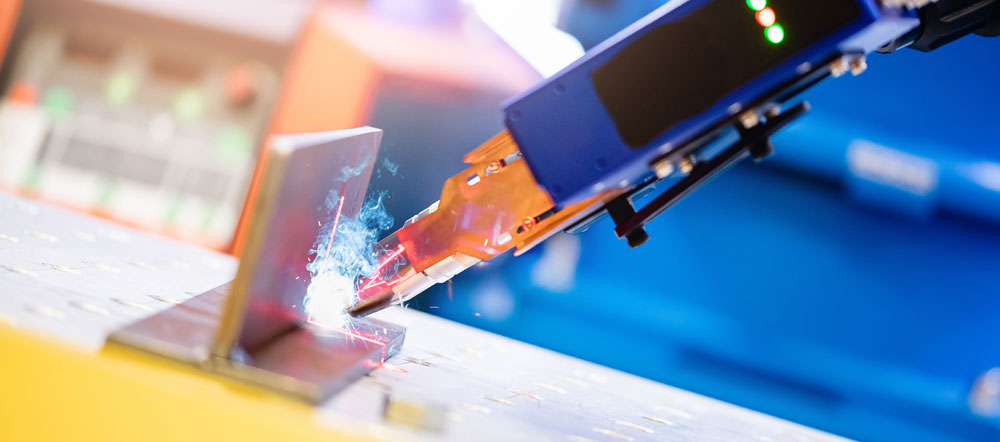
Want all the latest updates on innovative robotics applications? Simply subscribe to the item blog by completing the box at the top right.

